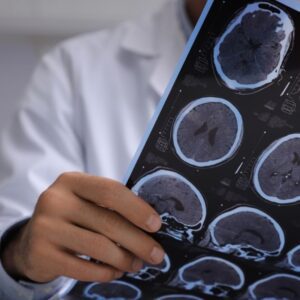Perceptions about the safety of marijuana are often rooted in the fact that many of those who used the drug in the 1960s and 1970s experienced no lasting negative consequences. However, this viewpoint fails to consider that today’s widely available strains of marijuana are much more potent.
The Average Potency of Marijuana Has Drastically Increased Over Time
The potency of marijuana depends on the level of delta-9-tetrahydrocannabinol, or THC, contained in the drug. THC is the main compound responsible for the psychoactive effects associated with smoking or otherwise ingesting marijuana.
Since growing operations aren’t standardized and marijuana remains federally illegal, it’s difficult to determine the potency and purity of the drug with complete certainty. However, products seized by the U.S. Drug Enforcement Administration have shown a steady increase in THC levels over time. In the early 1990s, THC levels averaged about 4%. By 2018, they increased to over 15%. (There are no concrete studies, but it is believed that marijuana from the 1960s and 1970s could have had as little as 0.5% THC.)
Concentrated forms of cannabis, such as hash and hash oil, are becoming increasingly popular and are even more potent than a typical joint. These products can have up to 80% or 90% THC.
THC levels are thought to be increased due to refinements in growing methods. In the 1960s and 1970s, cannabis was often smuggled from Colombia or Mexico and contaminated with other plant matter. Today, cannabis is more likely to be grown in controlled settings by people who’ve extensively studied the science of cultivating strains with desirable properties.
Strains with high THC levels are more desirable for large-scale operations because they can be sold for a higher profit. As with any other drug, regular users of marijuana develop a tolerance. Over time, they need higher doses of THC to get the same effects they crave. As cannabis culture becomes more mainstream, this creates strong consumer demand for high potency products.
Higher THC Levels Lead to Increased Risks
The higher THC levels in today’s marijuana lead to an increased risk of adverse effects. Lower THC doses are associated with feelings of happiness and the enhanced appetite often referred to as the munchies. Higher THC doses are more likely to cause negative reactions such as panic attacks or psychosis. Teens and young adults whose bodies and brains are not yet fully developed have the greatest risk of experiencing negative reactions to high-THC marijuana.
Some regular users of marijuana believe they can control for strength by adjusting the amount of smoke they inhale. However, there is no evidence this approach is sufficient to fully compensate for variations in potency.
In addition to a higher risk of an adverse experience while smoking, the growing potency of THC is thought to increase the risk of addiction. Some potential signs of a marijuana use disorder include:
- Using marijuana as a way to cope with stress or unpleasant emotions
- Being unable to reduce or stop using marijuana despite a desire to do so
- Believing it’s impossible to feel “normal” without being high
- Developing an increased tolerance for the drug
- Experiencing withdrawal symptoms such as anxiety, restlessness, headache, and gastrointestinal problems when it’s not possible to use marijuana
- Declining performance at work or school
- Trouble maintaining relationships with friends and family
- Neglecting hobbies and special interests to spend more time using marijuana
- Financial problems due to the amount of money spent on marijuana
- Becoming angry or defensive when others express concern about the frequency of marijuana use
Frequent use of marijuana is also associated with mood swings, weight gain, difficulty concentrating, trouble remembering information, and impaired coordination.
Getting Help
Substance use disorders aren’t caused by a lack of willpower, so it’s important to seek evidence-based care as soon as possible. At Waypoint Recovery Center’s South Carolina drug and alcohol addiction treatment program, we provide individual, group, and family therapy and a variety of holistic support services to help clients build the foundation for lasting sobriety. If needed, intensive outpatient programs and continuing care services are available to ease the transition back to independent living. Everyone’s path is unique, but we believe it’s never too late to face your challenges and harness your strengths as you work towards a new way of living.





